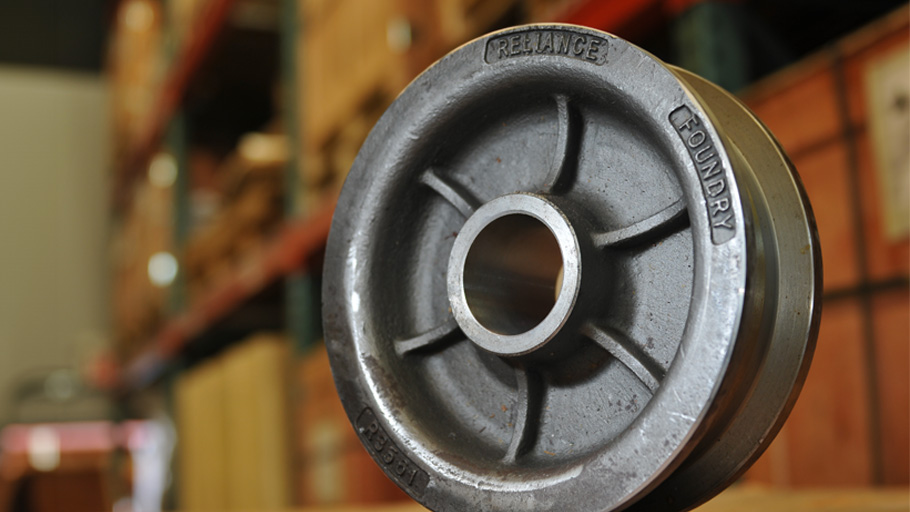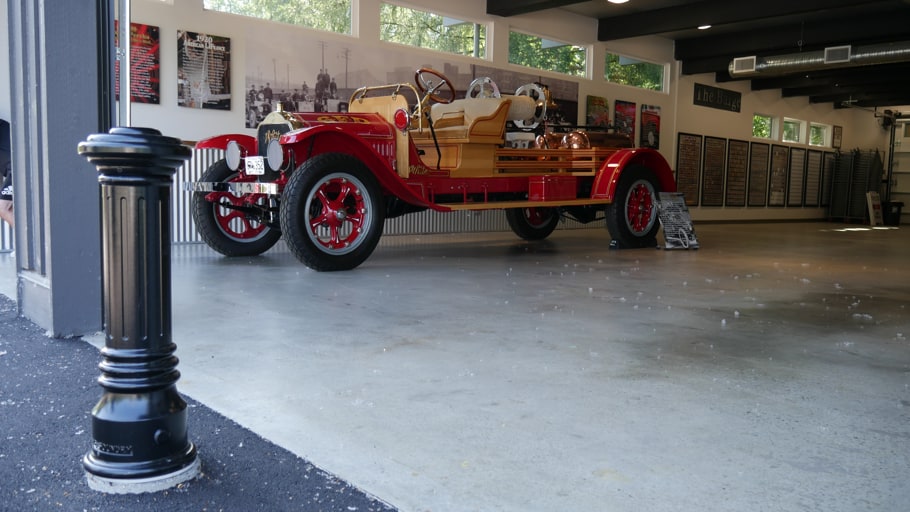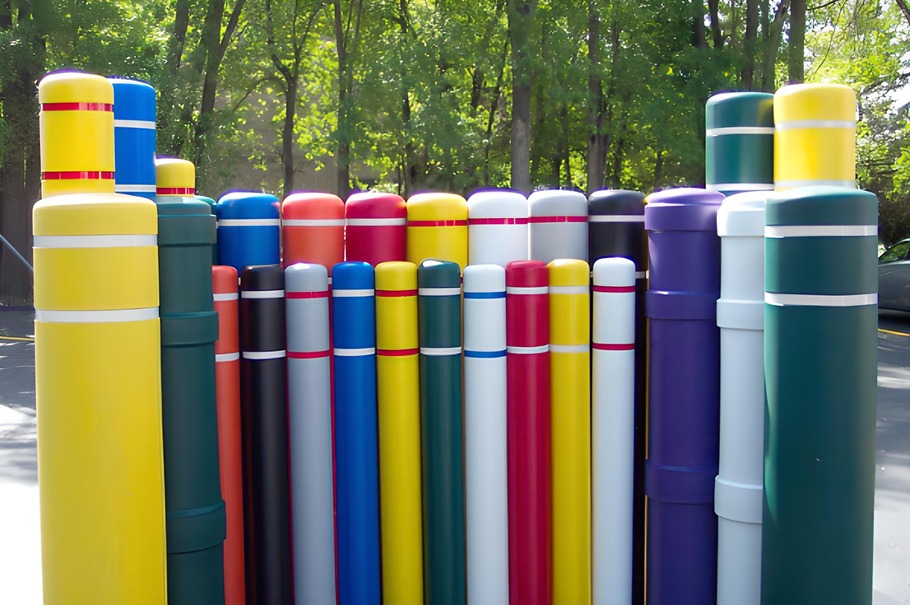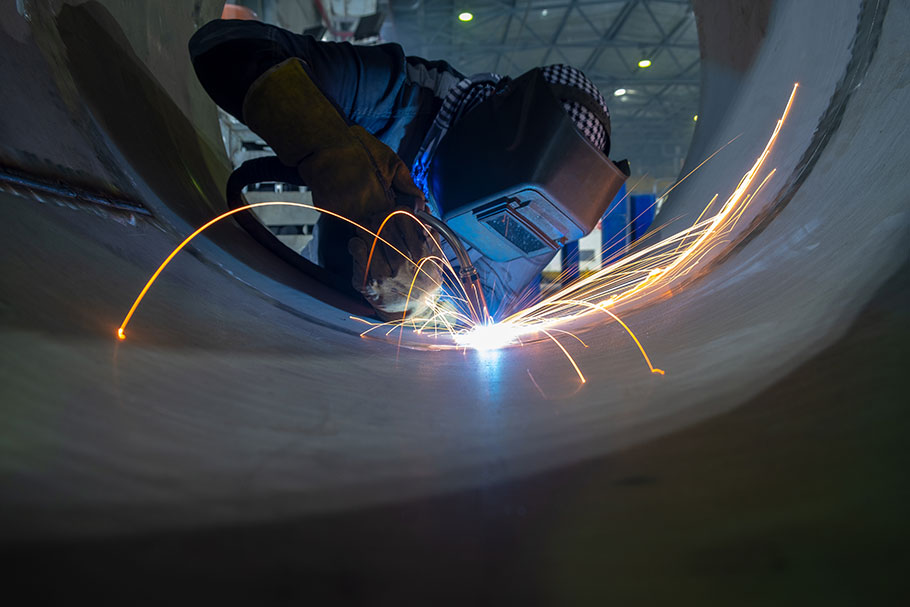Corrosion resistance varies by grade

You might assume that stainless steel never stains, but despite its name, stainless steel can still be susceptible to fingerprint and grease marks, as well as discoloration and eventual rust. However, the key distinction lies in its remarkable resilience. Unlike standard steel, stainless steel exhibits superior durability, withstanding prolonged exposure to the elements and enduring various forms of abuse before displaying any visible signs of wear.
What is stainless steel?
All steels have the same basic iron and carbon composition, but stainless steel also contains a healthy dose of chromium—the alloy that gives stainless steel its famous corrosion resistance.
There are multiple grades and classes of stainless steel, each with a slightly different composition of alloys. These chemical differences create slightly different physical characteristics.
Stainless steel must contain at least 10.5 percent chromium. Depending on the grade, it may contain much higher chromium levels, and additional alloying ingredients like molybdenum, nickel, titanium, aluminum, copper, nitrogen, phosphorous or selenium.
Common Stainless Steels
While there are plenty of common consumer stainless steel grades, including 409 and 430, the two most common stainless steel grades are 304 and 316. These fall under the austenitic class of stainless steels, which is the most common class of stainless grades. The key difference between 304 and 316 grade stainless is the addition of molybdenum, an alloy which drastically enhances corrosion resistance, especially for more saline or chloride-exposed environments. 316 stainless steels typically contain between two and three percent molybdenum, while 304 grade stainless does not contain any.
For outdoor furnishings like rails and bollards, stainless steel is an ideal corrosion-resistant material, but it will only withstand long-term exposure if the grade is appropriate for its environment. 304 is an economical and practical choice for many uses, particularly for home appliances, kitchen furnishings, and equipment tubing, but it doesn’t have the chloride resistance of 316. The slightly higher price point of 316 is well worth it in areas with high chloride exposure, especially in marine environments or by heavily salted roadways. Each application for stainless steel has unique demands and requires a grade of material that is up to the task.
304 Stainless Steel
304 stainless steel is the most common form of stainless steel used around the world, due to its excellent corrosion resistance and value. It contains between 16 and 24 percent chromium and up to 35 percent nickel—as well as small amounts of carbon and manganese.
The most common form of 304 stainless steel is 18-8 (18/8) stainless steel, which contains 18 percent chromium and 8 percent nickel.
304 stainless steel is the most common form of stainless steel used around the world due to excellent corrosion resistance and value.
304 can withstand corrosion from most oxidizing acids. That durability makes 304 easy to sanitize, and therefore ideal for kitchen and food applications. It is also common in buildings, décor, and site furnishings.
304 stainless steel does have one weakness—it is susceptible to corrosion from chloride solutions, or from saline environments like those near an ocean. Chloride ions can create localized areas of corrosion, called “pitting,” which can spread beneath protective chromium barriers to compromise internal structures. Solutions with as little as 25 ppm of sodium chloride can begin to have a corrosive effect.
Common uses for 304 stainless steel:
- Storage tanks
- Fasteners and finishing hardware (screws, nuts, bolts, plates, handles)
- Pots and pans
- Residential sinks and sink parts
- Indoor architectural/decorative hardware (panels, sculptures, sconces)
- Equipment tubing
- Residential appliances
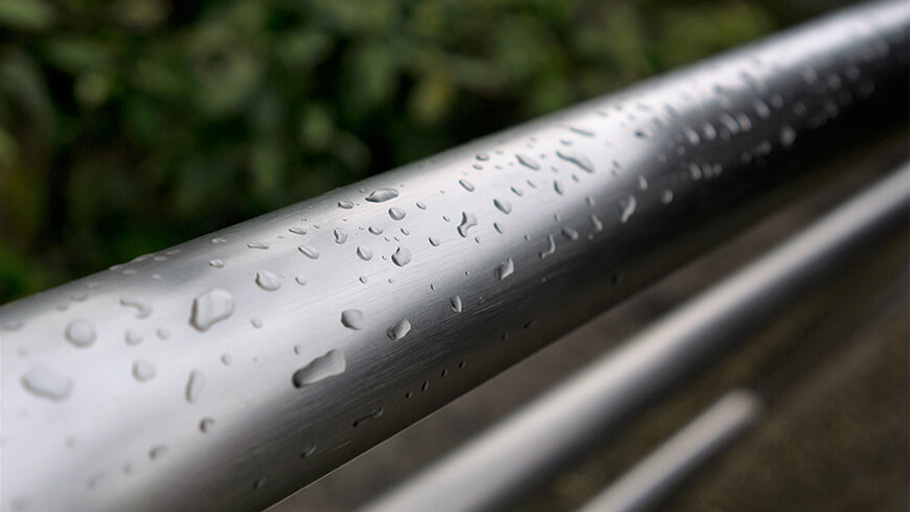
316 Stainless Steel
316 grade is the second-most common form of stainless steel. It has almost the same physical and mechanical properties as 304 stainless steel, and contains a similar material make-up. The key difference is that 316 stainless steel incorporates about 2 to 3 percent molybdenum. The addition increases corrosion resistance, particularly against chlorides and other industrial solvents.
316 stainless steel has additional molybdenum that gives it resistance to chlorides and other processing chemicals.
316 stainless steel is commonly used in many industrial applications involving processing chemicals, as well as high-saline environments such as coastal regions and outdoor areas where de-icing salts are common. Due to its non-reactive qualities, 316 stainless steel is also used in the manufacture of medical surgical instruments.
Alternative 300-series grades can contain up to 7 percent molybdenum. They provide even better chloride resistance, but such heavy-duty resistance is only necessary in industrial or high concentration exposure conditions.
Common uses for 316 stainless steel:
- Industrial equipment as used in:
- Pharmaceutical manufacturing
- Chemical manufacturing
- Industrial and chemical transportation
- Pressure vessels
- Cisterns and pipes for chemical applications
- Medical equipment where non-surgical steel
- Marine equipment
- Outdoor site furnishings
- Commercial kitchens
- Food production and processing in saline environments
- Commercial appliances
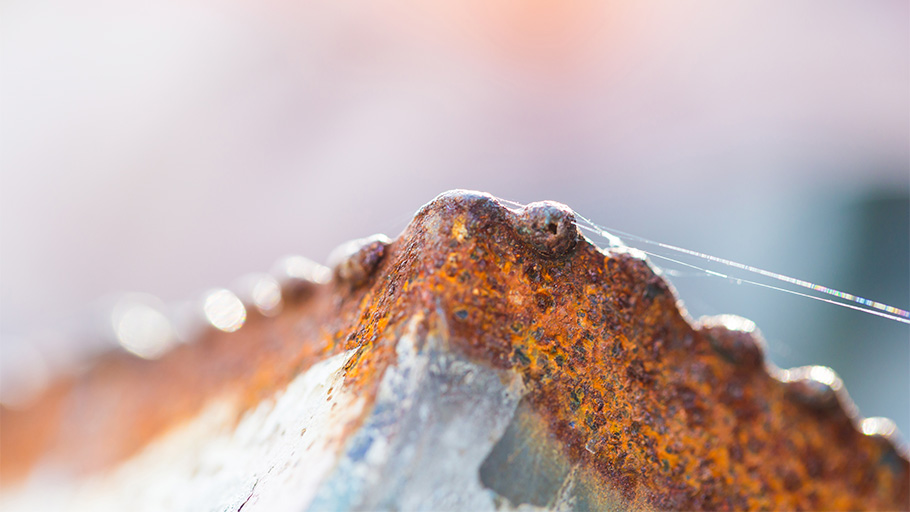
Natural Corrosion Resistance
Corrosion is a natural phenomenon. Pure elements always react with the surrounding environment, which is why so few elements are naturally found in their pure form. Iron is no exception.
In wet or humid conditions iron reacts with the oxygen contained in water to form iron oxide, also known as rust. The red flaky oxide deteriorates easily—exposing more material to corrosion. Iron and standard carbon steels are highly susceptible to this type of corrosion.
Stainless steel has the innate ability to form a passive layer that prevents corrosion. The secret?
Chromium.
The chromium found in all stainless steels reacts quickly with oxygen environments, much the same as iron. The difference is that only a very fine layer of chromium will oxidize (often only a few molecules in thickness). Unlike flaky and unstable iron oxide, chromium oxide is highly durable and non-reactive. It adheres to stainless steel surfaces and won’t transfer or react further with other materials. It is also self-renewing—if it’s removed or damaged, more chromium will react with oxygen to replenish the barrier. The higher the chromium content, the faster the barrier repairs itself.
Once oxidized, or passivized, stainless steel typically rusts at a very low rate of less than 0.002 inches per year. When kept in its best condition, stainless steel offers clean and bright surfaces ideal for many building and landscape designs.
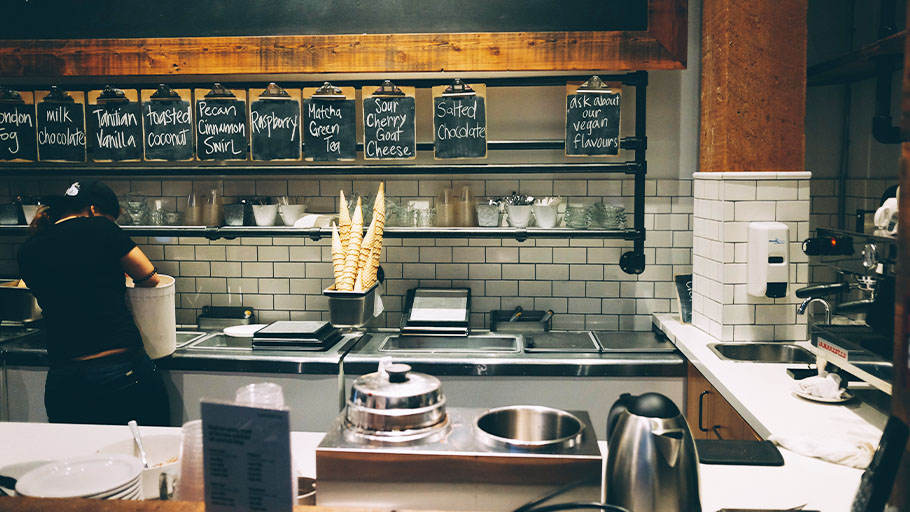
Versatile Applications
Both 304 and 316 stainless steels (as well as other 300-series grades) use nickel to maintain an austenitic composition at lower temperatures. Austenitic steels ensure a versatile balance of strength, workability, and corrosion resistance, making them ideal for outdoor architectural features, surgical instrumentation, and food processing equipment.
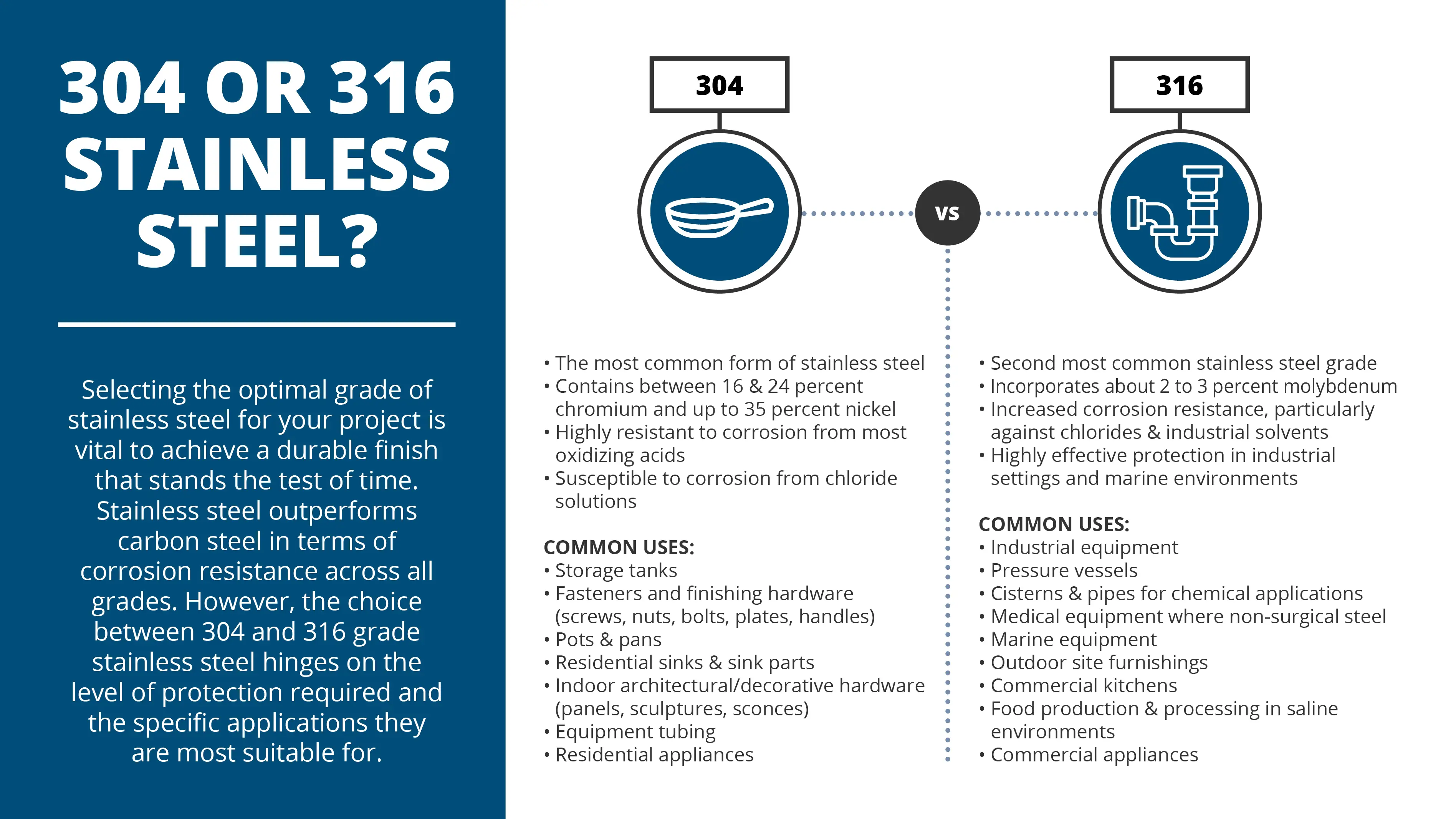
The ultimate benefits of stainless steel include a long service life that will retain an attractive, clean finish. Properly cared for and cleaned stainless steels present a low maintenance cost.
To request a quote for a custom project, please contact us.
Related Articles
- A Complete Guide to Stainless Steel
- Cleaning Stainless Steel
- Ask an Engineer: Austenitic Stainless Steel
- Does Stainless Steel Rust?



